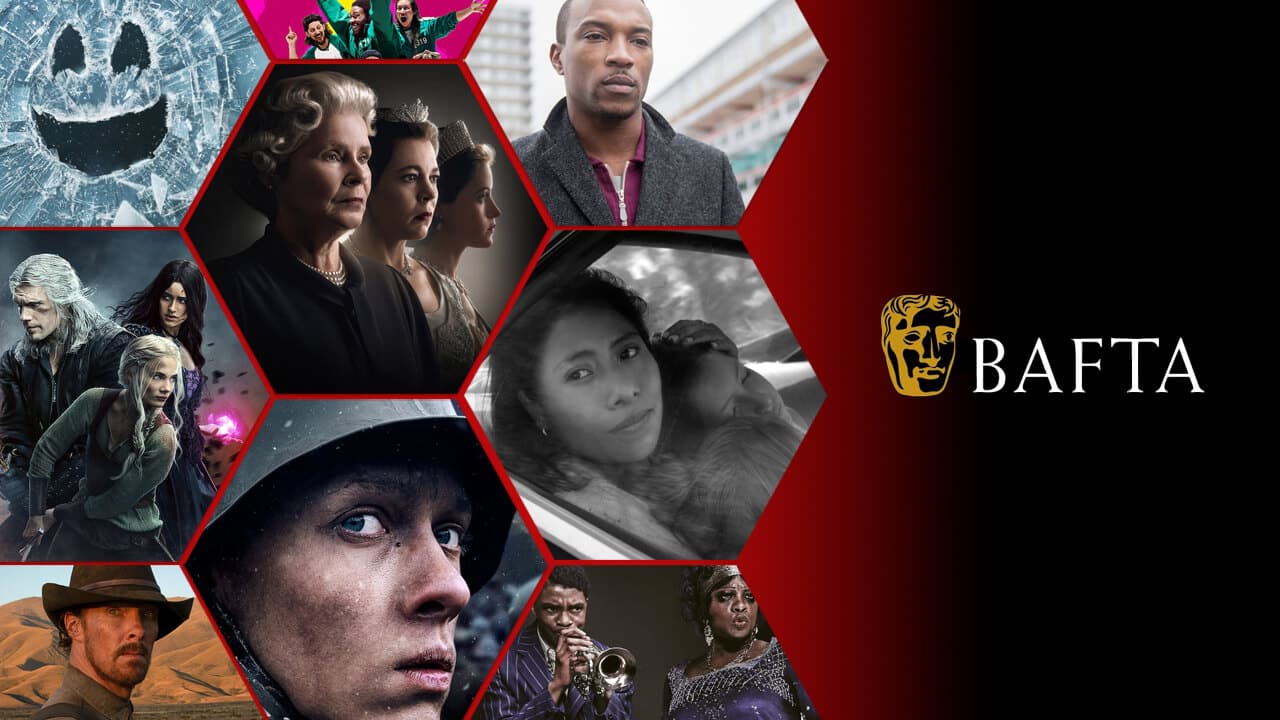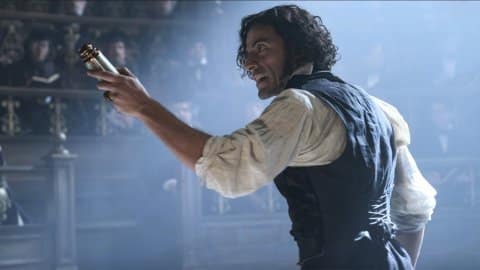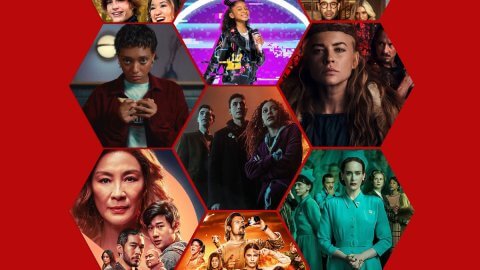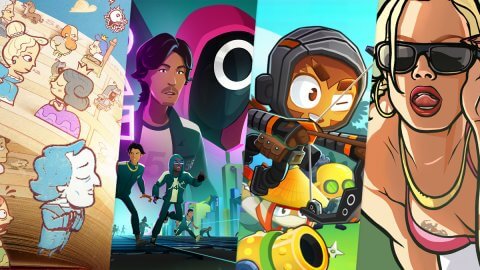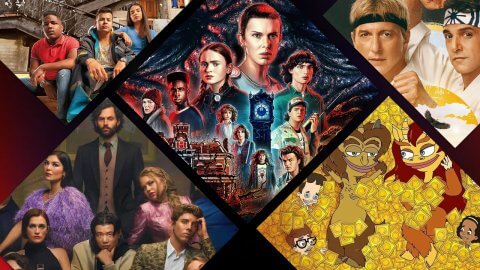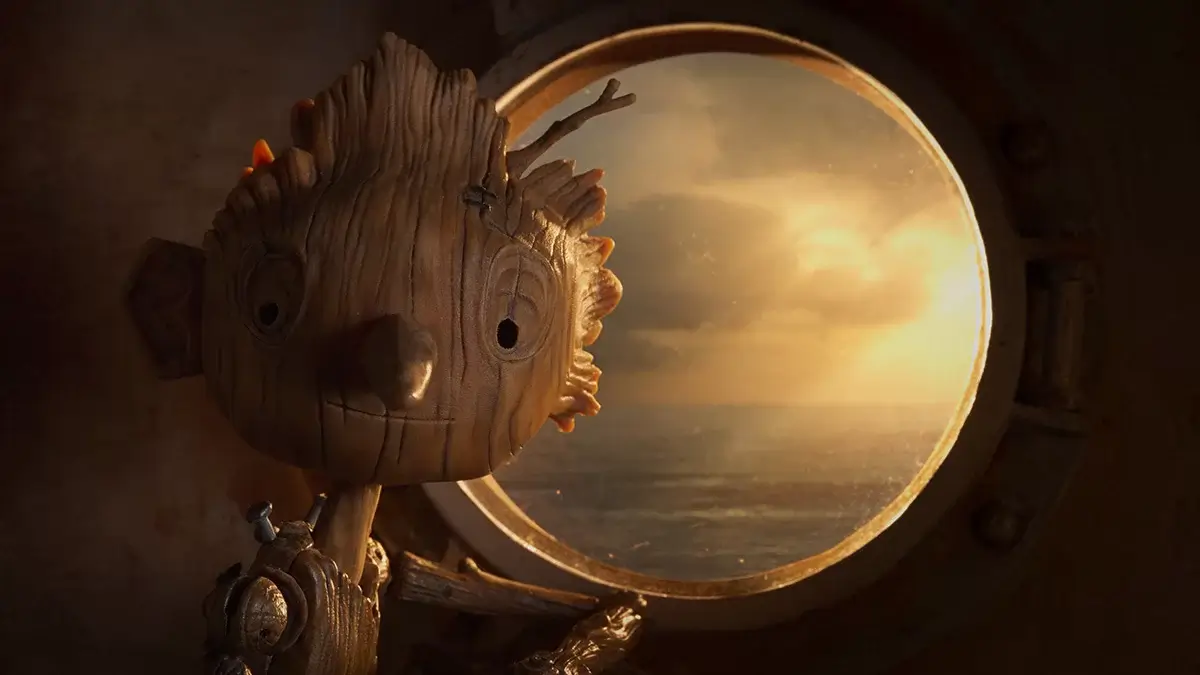
Guillermo del Toro’s Pinocchio – (Pictured) Pinocchio (voiced by Gregory Mann). – Picture: Netflix
The latest Netflix production from Academy Award-winning director Guillermo del Toro, PINOCCHIO, is now streaming, but should you give it a watch?
- Walt Disney’s Pinocchio (1940).
- 2-Time Oscar Nominee Pinocchio starring Roberto Benigni (2019).
- Disney+ Original Pinocchio starring Tom Hanks (2022)
These are just a few of the many adaptations of Carlo Collodi’s children’s story The Adventures of Pinocchio since its publishing date back in 1883.
We were all raised on some version of the tale or another and, as a culture, we are well versed in the story of a wooden puppet coming to life to live out the big world’s adventures. Nose-growing. Sea Beast Escaping. You get the idea.
So when I heard about the rousing critical reception to the latest rendition of Pinocchio from acclaimed director/producer Guillermo del Toro, I thought “What could possibly be so special about this? We know it. We get it. Disney remakes their classic tales all the time now and they rarely live up to the version we already have. How can this be worthy of its lineage?”
While some of those thoughts may be valid, the beauty of this latest version is that I don’t think del Toro contemplated those thoughts at all.

Based on Gris Grizzly’s design from his 2002 edition of the original 1883 novel, del Toro’s vision for this project has been ingrained in him since he was a young boy himself.
“No art form has influenced my life and my work more than animation and no single character in history has had as deep of a personal connection to me as Pinocchio,” said del Toro. “I’ve wanted to make this movie for as long as I can remember.”
What transpires is a combination of del Toro’s ever-present fascination with a “monster’s” interaction with human societal structure with the lens of child-like exuberance & naivety.
It should come as no surprise that the creator of such films as Pan’s Labyrinth & The Shape of Water has long been fascinated with Mary Shelley’s Frankenstein (a character he’s eying an adaptation for Netflix) and has held the opinion that the comparison to the Pinocchio story is more similar than most would conclude.
In this film, Pinocchio is brought into the world and thrust upon its society without a guidance system or education to form what it means to be “human”. Because Pinocchio is seen as a child versus Frankenstein’s monster, the adults in his orbit seek more to control, manipulate, & exploit him more than destroy him. The comparison to his own childhood experiences made del Toro relate to the feelings that Pinocchio and Frankenstein’s monsters both have to endure.
With all this in mind, it should also come as no surprise that del Toro’s Pinocchio story has more heart, more realism, & more darkness than the previous cinematic adaptations.
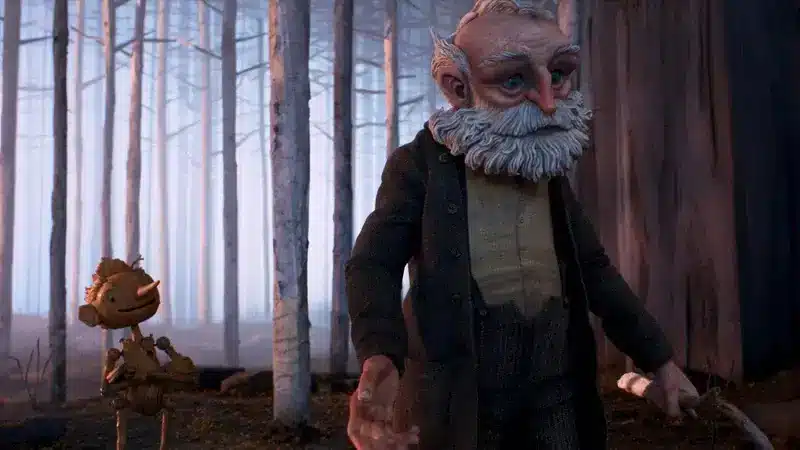
Guillermo del Toro’s Pinocchio – (L-R) Pinocchio (voiced by Gregory Mann) and Gepetto (voiced by David Bradley). Cr: Netflix © 2022
Set in a small Italian village during the rise of fascism under Mussolini’s authoritarian rule in the 1930s, the film does not shy away from the harsh realities of the period and how it would affect the decision-making of our protagonists as well as the village’s reaction to such a spectacle as Pinocchio. Meditations on religious ideology, collateral damage of wartime regions, and, above all else, grief are on full display without the typical guardrails set up in modern family film storytelling.
The truly unique part of this version of the classic tale is that the film belongs as much or more to Gepetto as it does to Pinocchio. His loss is profound and his grief is extensive, including a not so subtle alcoholism that normally would be shuttered from the eyes & ears of children. We are confronted with all aspects of him which makes for a more genuine connection to the film’s audience and a more grounded story that earns its empathetic & heartwarming conclusion.
Though bold in its design & execution, it must be noted that I wonder how general audiences, particularly parents of young children, will react to this retelling. Shifting the focus, removing the Disney veneer & more lavish musical numbers, & adding elements like child soldiering during fascism regimes make this more effective but less friendly to discerning family palettes.
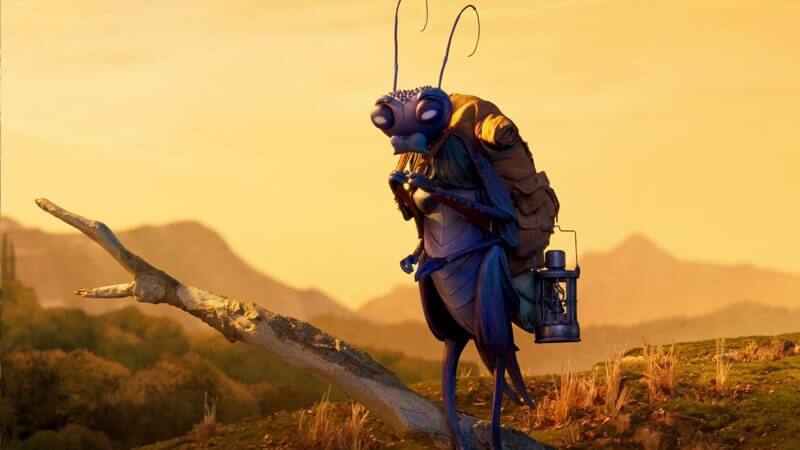
Picture: Netflix
Like most critics, I would be remiss if I did not gush over the animation style of this film. del Toro’s love for Disney animation and the original 1940 film adaptation made him stray from the 2-dimensional perfection of the classic model and create a bold, gothic claymation style mixed with modern digital rendering. It’s a stark contrast that pairs well with the dark yet grounded storytelling switch that accompanies it. A hearty “welcome back” to the Jim Henson Company, who co-produced the look & feel of the film and reminded us all that the team that brought you The Dark Crystal can still bring it in today’s animation landscape.
The film is also buoyed by some incredibly compelling voice-acting performances led by the likes of Ewan McGregor, Cate Blanchett, Tilda Swinton, Christoph Waltz, Ron Perlman, David Bradley, Finn Wolfhard, John Turturro, & the exuberant Gregory Mann as the titular Pinocchio.
Overall, Guillermo del Toro’s Pinocchio creates a new chapter in the legacy of the classic tale. It moves the story forward into a more realistic depiction of a grief stricken man finding a way to forgive himself and traverse life’s cruelty in order to embrace paternal love once more. del Toro’s constant challenge as to what constitutes being human is a welcomed addition to this traditional children’s folktale that we all thought couldn’t be evolved.
This is my favorite animated film of the year and maybe Netflix’s best-animated film to date.

Watch Guillermo Del Toro’s Pinocchio on Netflix if you like:
- The Iron Giant
- Coraline
- Corpse Bride
- Fantastic Mr. Fox
- Frankenweenie
- Pinocchio (1940)
MVP of Guillermo Del Toro’s Pinocchio
Christoph Waltz as Count Volpe.
Though a combination of the classic Mangiafuoco & Fox and Cat duo, the character of Count Volpe breathes life and originality to this new adaptation as a plausible villain set to exploit the naive stringless puppet for his own financial gain. Waltz’s performance stood out among his star-studded cast of peers with his sinister style, domineering tone, & surprisingly singing chops that I didn’t know he had.
PLAY, PAUSE, OR STOP?
PLAY.
A welcomed variation that brings more empathy, compassion, & gothic style to a well-worn story.

